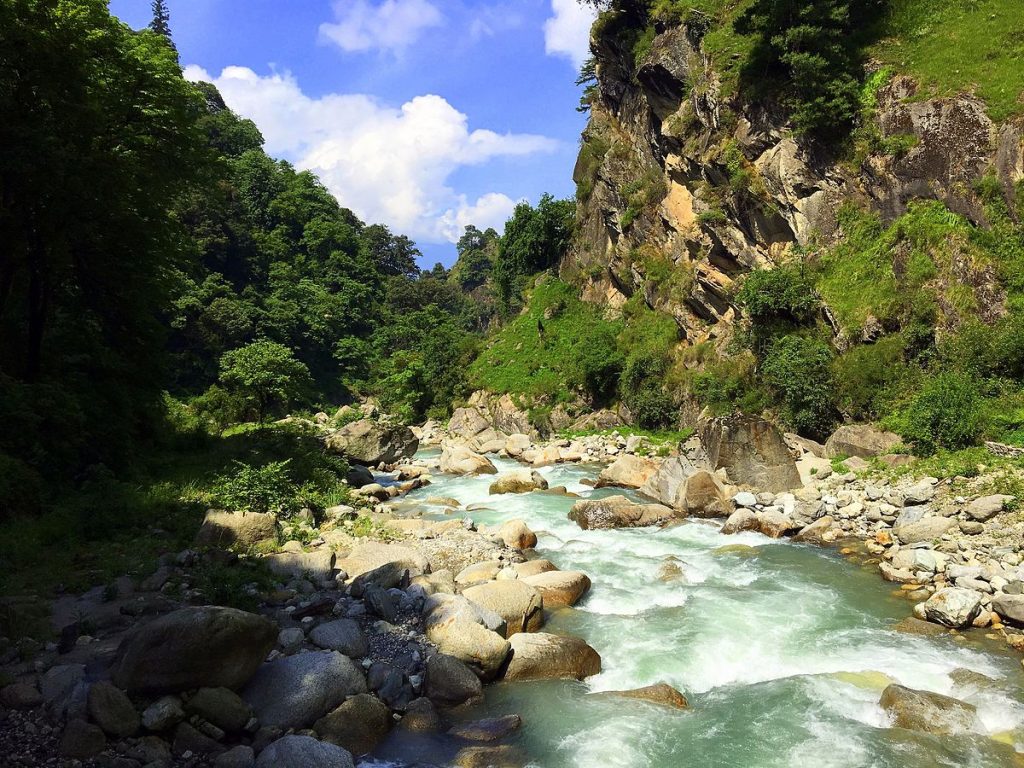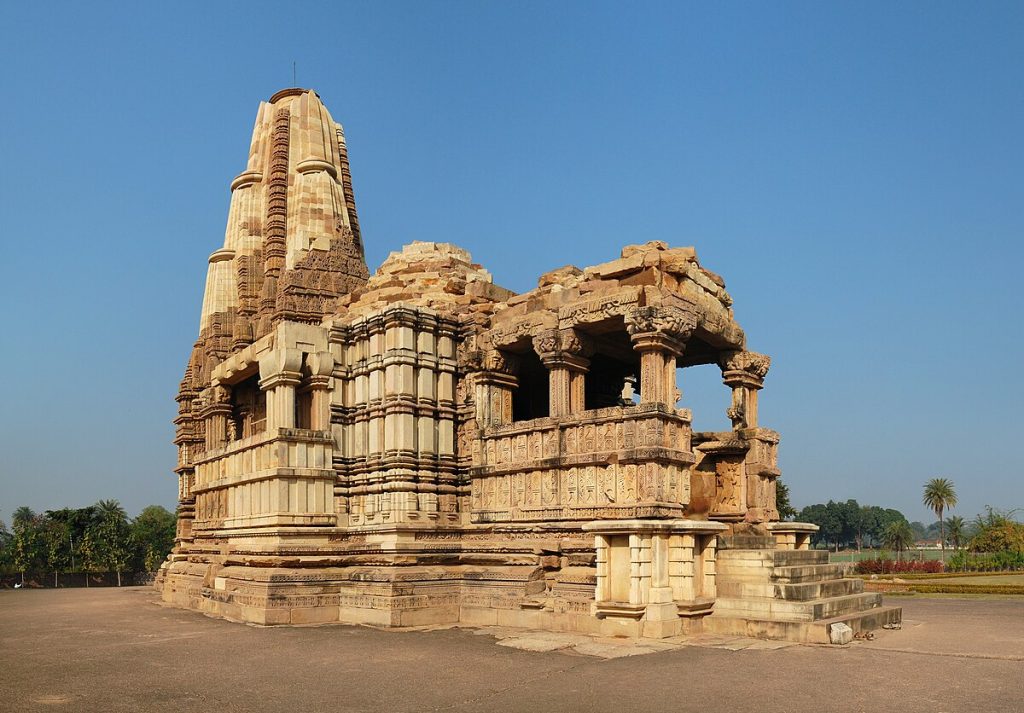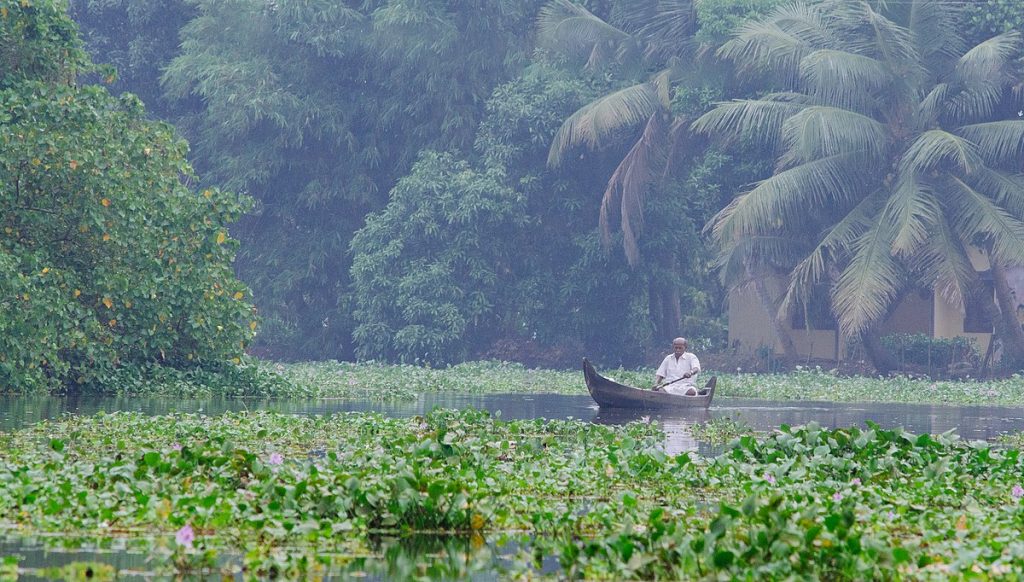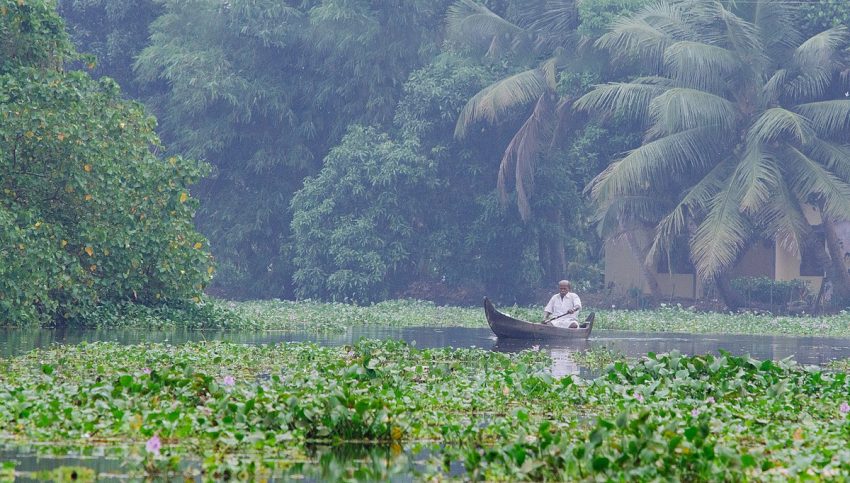India, a land of diverse landscapes and rich cultural heritage, beckons travelers with its myriad experiences. As winter casts its enchanting spell, three lesser-known destinations emerge as perfect havens for those seeking tranquility, adventure, and authentic encounters. Let’s delve into the heart of these hidden gems: Tirthan Valley in Himachal Pradesh, Khajuraho in Madhya Pradesh, and Kumarakom in Kerala.
1. Tirthan Valley, Himachal Pradesh

Where Time Stands Still
Let’s delve into the captivating beauty of Tirthan Valley in Himachal Pradesh. Perched at an altitude of 1600 meters above sea level, this hidden gem derives its name from the Tirthan River, which gracefully flows through its heart. As you step into Tirthan Valley, you’ll find yourself surrounded by a pristine wonderland that remains untouched by the chaos of modern life. Here are the key highlights:
1. Great Himalayan National Park
Established in 1984 and listed as a UNESCO World Heritage Site, the Great Himalayan National Park is a sanctuary for nature enthusiasts and adventure seekers. Spanning 754 square kilometers, it harbors 181 species of birds and 31 species of mammals. Camping amidst lush green forests and meandering streams is a favorite among trekkers. The park also hosts several quaint villages, allowing you to immerse yourself in the local traditions and tribal culture.
2. Pristine Lakes and Gushing Waterfalls
Tirthan Valley’s allure lies in its pristine lakes, historical forts, and ancient temples. Imagine standing by the serene Serolsar Lake, surrounded by cedar trees, or witnessing the majestic Chhoie Waterfall as it cascades down the mountains. The valley’s gushing waterfalls are a photographer’s delight, offering unique opportunities to capture the lush green surroundings. And don’t miss the Jalori Pass, a gateway to adventure with panoramic views of the Himalayas.
3. Angling and Fishing
The confluence of the rivers Tirthan and Flachan, along with the rivers Sainj and Tirthan, creates a haven for anglers. Trout fishing is a popular activity here, and the crystal-clear waters beckon those seeking a quiet escape. Picture yourself casting your line into the pristine river, surrounded by snow-capped peaks and whispering pine forests.
Tirthan Valley truly embodies the essence of offbeat travel, where every corner reveals a piece of paradise. Whether you’re a nature lover, an adventure enthusiast, or simply seeking solace, this Himalayan wonderland awaits your exploration.
How to Reach
- By Air: The nearest airport is Bhuntar Airport (Kullu-Manali Airport), approximately 50 kilometers away. From there, hire a taxi or take a local bus to reach Tirthan Valley.
- By Rail: The closest railway station is Joginder Nagar, around 143 kilometers from Tirthan. A scenic drive through pine-clad hills awaits you.
- By Road: Tirthan Valley is well-connected by road. Drive from Delhi via Chandigarh and Mandi to reach this haven.
Best Season to Travel
Winter, from November to February, is magical in Tirthan. Snow blankets the landscape, and the crisp air invigorates the soul.
Weather Across the Year
- Winter: Sub-zero temperatures, snowfall, and frozen waterfalls.
- Spring: Blossoming flowers and pleasant weather.
- Summer: Cool days and chilly nights.
- Monsoon: Lush greenery and occasional showers.
Ideal Stay Time
Plan for at least 3 to 4 days to soak in the tranquility and explore the Great Himalayan National Park.
Tourist Attractions
- Great Himalayan National Park: Trek through dense forests, spot wildlife, and camp under star-studded skies.
- Serolsar Lake: A serene alpine lake surrounded by cedar trees.
- Jalori Pass: A gateway to adventure, offering panoramic views.
Costing
- Accommodation: Budget guesthouses start at ₹1,500 per night.
- Food: Local Himachali cuisine is delightful and affordable.
- Activities: Guided treks and nature walks cost around ₹1,000 per person.
2. Khajuraho, Madhya Pradesh

Where Temples Whisper Ancient Secrets
Khajuraho, a historic town in northern Madhya Pradesh, unfolds like a mesmerizing chapter from India’s past. Revered for its sculptured temples dedicated to Shiva, Vishnu, and Jaina patriarchs, this UNESCO World Heritage Site is a treasure trove of architectural marvels. Let’s delve into the nuances:
1. Architectural Splendor
Khajuraho’s temples, built between the 9th and 12th centuries, showcase exquisite stone carvings that narrate tales of love, devotion, and spirituality. The intricate sculptures depict celestial nymphs, gods, goddesses, and everyday life. The Kandariya Mahadeva Temple, adorned with sensuous figures, stands as a testament to the Chandelas’ artistic prowess.
2. The Sensuous Sculptures
The temples’ most intriguing feature is their erotic art, which celebrates human passion and desire. These sculptures, though provocative, are symbolic of the union of the physical and spiritual realms. Visitors marvel at the delicate balance between sensuality and divinity, transcending time and societal norms.
3. Mysteries and Legends
Khajuraho’s origins are shrouded in mystery. Some believe it was named after the date palm trees (khajur) that once adorned the region. Others attribute its name to the mythical sage Khajur Rishi. Legends whisper that the temples were built in a single night by divine architects. Regardless of the truth, Khajuraho continues to captivate travelers seeking a glimpse into India’s ancient past.
Costing and Practical Tips
- Accommodation: Choose from comfortable hotels and guesthouses, with prices starting at around ₹2,500 per night.
- Exploration: Hire a local guide to unravel the stories behind each sculpture.
- Climate: Visit during the cooler months, from October to March, for pleasant weather.
Khajuraho invites you to step into a realm where art, spirituality, and desire intertwine—a journey that transcends centuries and leaves an indelible mark on your soul.
How to Reach
- By Air: Khajuraho Airport connects to major Indian cities.
- By Rail: Khajuraho Railway Station is well-linked to Delhi, Agra, and Varanasi.
- By Road: Regular buses ply from Jhansi, Satna, and other nearby towns.
Best Season to Travel
October to March offers pleasant weather for exploring the temples.
Weather Across the Year
- Winter: Mild days and cool nights.
- Summer: Hot and dry.
- Monsoon: Refreshing showers.
Ideal Stay Time
Spend 2 to 3 days to marvel at the intricate carvings and unravel Khajuraho’s history.
Tourist Attractions
- Khajuraho Temples: Admire the stunning sculptures depicting love, dance, and spirituality.
- Panna National Park: Spot tigers, leopards, and rare wildlife.
- Raneh Falls: Marvel at the dramatic canyon and rock formations.
Costing
- Accommodation: Mid-range hotels start at ₹2,500 per night.
- Food: Enjoy local delicacies at reasonable prices.
- Entrance Fees: ₹30 for Indians and ₹500 for foreigners at the Khajuraho Group of Monuments.
3. Kumarakom, Kerala

Where Backwaters Beckon
Nestled on the banks of the Vembanad Lake, Kumarakom emerges as a symphony of water, greenery, and tranquility. This small village, part of the Kuttanad region, is a paradise indeed. Let’s explore the nuances:
1. The Allure of Backwaters
Kumarakom’s allure lies in its backwaters—a network of serene canals, lagoons, and lakes. As you glide along the emerald green waters on a traditional houseboat, time slows down. Witness the rhythm of daily life—the fishermen casting their nets, the women washing clothes by the water’s edge, and the gentle sway of coconut palms. It’s a sensory journey that immerses you in Kerala’s soul.
2. Kumarakom Bird Sanctuary
Spread over 14 acres, the Kumarakom Bird Sanctuary is a haven for avian enthusiasts. Here, migratory birds find refuge during the winter months. Spot egrets, herons, kingfishers, and the elusive Indian darter. The sanctuary’s mangrove forests and wetlands create a thriving ecosystem—a symphony of birdcalls and rustling leaves.
3. Coir Craft and Village Life
Kumarakom isn’t just about natural beauty; it’s also about heritage. Witness the craft of coir weaving, where skilled artisans transform coconut fibers into mats, baskets, and ropes. Explore the village life—interact with farmers, learn about paddy cultivation, and savor the flavors of Karimeen (pearl spot fish) and prawns. It’s a glimpse into the heart of Kerala.
Costing and Practical Tips
- Houseboats: Spend a night on a houseboat, starting at around ₹5,000 for two people.
- Accommodation: Resorts and homestays offer comfort, with prices ranging from ₹2,500 to ₹6,000 per night.
- Local Cuisine: Don’t miss the spicy fish curry and coconut-infused dishes.
Kumarakom invites you to embrace its simplicity, connect with nature, and discover the magic of Kerala’s backwaters.
How to Reach
- By Air: The nearest airport is Cochin International Airport, approximately 76 kilometers away. From there, hire a taxi or take a scenic drive to Kumarakom.
- By Rail: The closest railway station is Kottayam, around 16 kilometers from Kumarakom. Trains from major cities like Delhi, Mumbai, and Chennai connect to Kottayam.
- By Road: Drive through picturesque landscapes from Kottayam to reach this idyllic village.
Best Season to Travel
Winter, from November to February, is ideal. The weather is pleasant, and the backwaters shimmer under the sun.
Weather Across the Year
- Winter: Mild temperatures, cool breeze, and sunny days.
- Summer: Warm and humid.
- Monsoon: Heavy rainfall, lush greenery, and a romantic ambiance.
Ideal Stay Time
Plan for 3 to 4 days to fully immerse yourself in the backwater experience.
Tourist Attractions
- Vembanad Lake: Cruise along the serene backwaters on a traditional houseboat.
- Kumarakom Bird Sanctuary: Spot migratory birds and enjoy nature walks.
- Pathiramanal Island: A paradise for birdwatchers and solitude seekers.
Costing
- Houseboats: A night on a houseboat starts at ₹5,000 for two people.
- Accommodation: Resorts and homestays range from ₹2,500 to ₹6,000 per night.
- Local Cuisine: Don’t miss the spicy fish curry and coconut-infused dishes.
As you plan your winter escapade, consider these offbeat destinations. Whether it’s the snow-kissed peaks of Tirthan Valley, the ancient temples of Khajuraho, or the tranquil backwaters of Kumarakom, India awaits with open arms. Pack your bags, embrace the chill, and create memories that will warm your heart forever.
Bon voyage!
